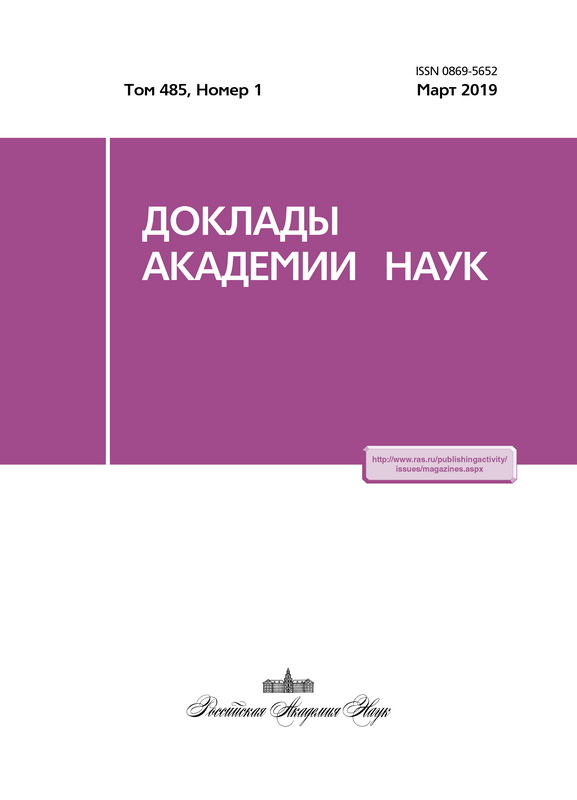Controlling morphology of polymer photoactive layer in photovoltaic elements: mesoscopic simulation
- Authors: Komarov P.V.1,2, Baburkin P.O.2, Ivanov V.A.3, Chen S.4, Khokhlov A.R.1,3
-
Affiliations:
- Institute of Organoelement Compounds of the Russian Academy of Sciences
- Tver State University
- Lomonosov Moscow State University
- National Tsing Hua University
- Issue: Vol 485, No 1 (2019)
- Pages: 53-57
- Section: Physical chemistry
- URL: https://journals.eco-vector.com/0869-5652/article/view/12816
- DOI: https://doi.org/10.31857/S0869-5652485153-57
- ID: 12816
Cite item
Abstract
A concept of fabrication of well-organized conductive pathways in CP/NP blends in photovoltaic devices. It is assumed that to succeed in this task, one can use the property of AB diblock copolymers that, depending on the chemical structure of A and B blocks and the ratio between their lengths, these copolymers undergo microphase separation in bulk to form thermodynamically stable domains of cubic symmetry with 3D periodicity. Using a mesoscale simulation technique, we demonstrated that the morphology of the photoactive layer of photovoltaic devices can be controlled by selecting the surface NP modifier (responsible for the compatibility of NPs with the polymeric matrix), the chemical structure of the blocks of a conjugated copolymer, and their length.
About the authors
P. V. Komarov
Institute of Organoelement Compounds of the Russian Academy of Sciences; Tver State University
Author for correspondence.
Email: pv_komarov@mail.ru
Russian Federation, 28, Vavilova street, Moscow, 119991; 33, Zheliabova street, Tver, 170100
P. O. Baburkin
Tver State University
Email: pv_komarov@mail.ru
Russian Federation, 33, Zheliabova street, Tver, 170100
V. A. Ivanov
Lomonosov Moscow State University
Email: pv_komarov@mail.ru
Russian Federation, 1, Leninskie gory, Moscow, 119991
Show-An Chen
National Tsing Hua University
Email: pv_komarov@mail.ru
Taiwan, Province of China, Hsinchu
A. R. Khokhlov
Institute of Organoelement Compounds of the Russian Academy of Sciences; Lomonosov Moscow State University
Email: pv_komarov@mail.ru
Academician of the RAS
Russian Federation, 28, Vavilova street, Moscow, 119991; 1, Leninskie gory, Moscow, 119991References
- Lu L., Zheng T., Wu Q., Schneider A. M., Zhao D., YU L. // Chem. Rev. 2015. V. 115. № 23. P. 1266612731.
- Tvrdy K., Frantsuzov P. A., Kamat P. V. // Proc. Natl. Acad. Sci. USA. 2011. V. 108. № 1. P. 29-34.
- Ren S., Chang L.-Y., Lim S.-K., Zhao J., Smith M., Zhao N., Bulovi V., Bawendi M., Gradecak S. // Nano Lett. 2011. V. 11. № 11. P. 3998-4002.
- Lee С. W., Chou C. H., Huang J. H., Hsu C. S., Nguyen T. P. // Mater. Sci. Eng. B. 2008. V. 147. № 2/3. P. 307-311.
- Saunders B. R. // J. Colloid and Interface Sci. 2012. V. 369. P. 1-15.
- Matsen M. W., Griffiths G. H., Wickham R. A., Vas- siliev O. N. // J. Chem. Phys. 2006. V. 124. № 2. P. 024904-9.
- Groot R. D., Warren P. B. // J. Chem. Phys. 1997. V. 107. № 11. P. 4423-4435.
- Komarov P. V., Veselov I. N., Khalatur P. G. // Chem. Phys. Lett. 2014. V. 605/606. P. 22-27.
- Markina A. A., Ivanov V. A., Komarov P. V., Khokhlov A. R., Tung S.-H. // J. Phys. Chem. B. 2017. V. 121. № 33. P. 7878-7888.
- Giansante C., Carbone L., Giannini C., Altamura D., Ameer Z., Maruccio G., Loiudice A., Belviso M. R., Coz- zoli P. D., Rizzo A., Gigli G. // J. Phys. Chem. C. 2013. V. 117. № 25. P. 13305-13317.
- Hildebrand J. J.H., Scott R. L. The Solubility of NonElectrolytes. N.Y.: Reinhold, 1949.
- Greaney M. J., Brutchey R. L. // Materials Today. 2015. V. 18. № 1. P. 31-38.
- Askadskii A. A. Computational Materials Science of Polymers. Cambridge: Cambridge Intern. Sci. Publ., 2001.
- Sadovnichy V., Tikhonravov A., Voevodin V., Opanas- enko V. In: Contemporary High Performance Computing: From Petascale toward Exascale. L.: Chapman & Hall/CRC, 2013. P. 283-307
Supplementary files







